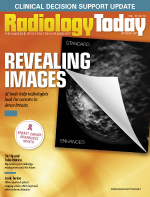 Editor's Note: Work in Progress
Editor's Note: Work in Progress
By Dave Yeager
Radiology Today
Vol. 18 No. 10 P. 3
October is Breast Cancer Awareness Month, and, according to the Centers for Disease Control and Prevention, it's still the most commonly diagnosed cancer among US women. The CDC also reports that breast cancer is the most common cause of cancer death among Hispanic women in the United States and the second most common cause of cancer death among American Indian/Alaska Native, Asian/Pacific Islander, black, and white women. In 2014, the most recent year for which statistics are available, 236,968 women were diagnosed with breast cancer, and 41,211 women died of it. That's 7,475 more than the total number of US traffic fatalities in 2014. With all of the stories about the potential drawbacks of breast cancer screening that have been in the news this past year, some people may be tempted to conclude that we've reached the outer bounds of what screening can do, but it seems to me that there's still meaningful work to be done in the screening process.
This month's cover story by Beth W. Orenstein looks at artificial intelligence tools that can improve cancer detection in women with dense breasts; dense tissue increases a woman's risk of breast cancer, a problem compounded by its being more difficult to spot on imaging exams. In addition, we have articles on a new protocol with the potential to make breast MR faster and more economically viable as a screening exam and a new teleradiology program that allows women in underserved areas to videoconference with radiologists when they receive their mammography results.
Also in this issue, Keith Loria reports on a new technology that may improve the identification of atherosclerotic plaque, Orenstein (again) talks to experts about how to prepare for clinical decision support, and Dan Harvey details the latest trends in radiology ergonomics.
Enjoy the issue.
david.yeager@gvpub.com

